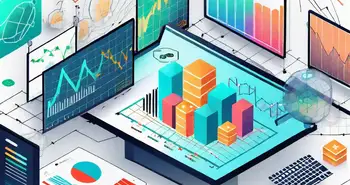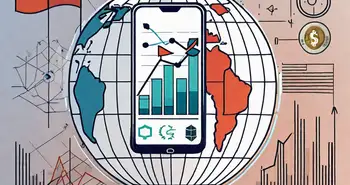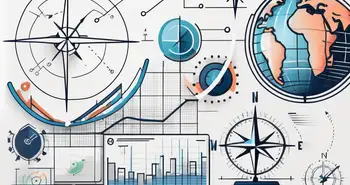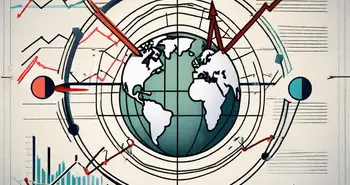The Ultimate Guide to E-Trading: Everything You Need to Know
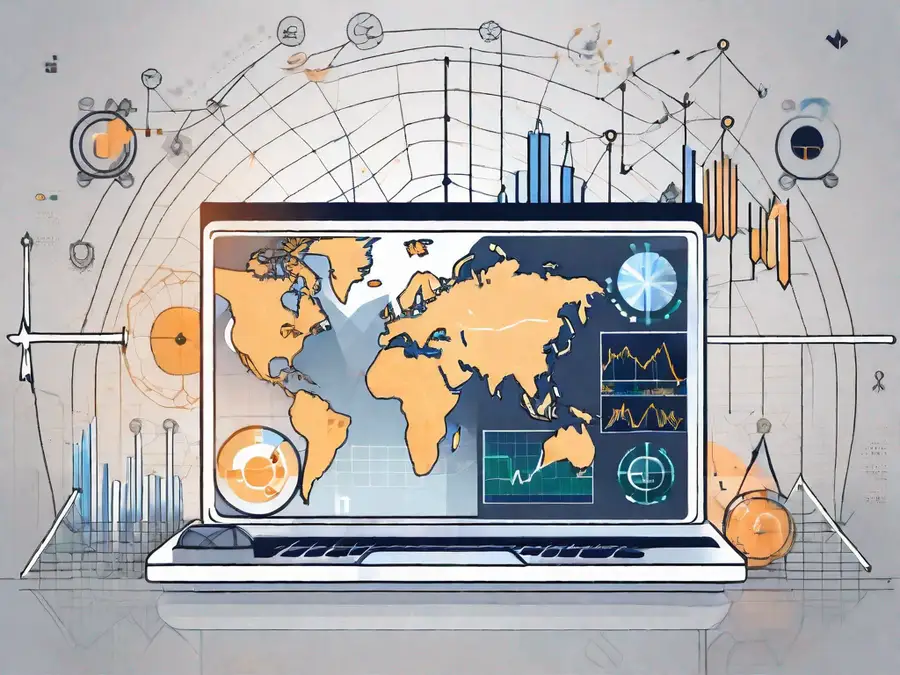
E-Trading has revolutionized the way we invest and trade in financial markets. With just a few clicks, you can buy and sell stocks, bonds, commodities, and currencies from the comfort of your own home. But what exactly is E-Trading, and how can you make the most of this powerful tool? In this guide, we will delve into the basics of E-Trading, explore the essential tools you need to succeed, discuss the strategies that can help you achieve your investment goals, and shed light on the regulations and legal aspects that govern this exciting field.
Understanding the Basics of E-Trading
Before we dive into the nitty-gritty, let's start with the fundamentals. E-Trading, also known as electronic trading, is the process of buying and selling financial instruments using electronic platforms. This means that you no longer need to call a broker or visit a physical trading floor to execute trades. Instead, you can access various trading platforms through your computer or mobile device, allowing you to trade anytime, anywhere.
E-Trading has come a long way since its inception. Initially, it was limited to trading stocks and bonds. However, with advancements in technology, it has expanded to encompass a wide range of financial instruments, including options, futures, forex, and cryptocurrencies.
Let's take a closer look at some of the financial instruments that can be traded electronically:
- Options: E-Trading allows investors to trade options, which are contracts that give the buyer the right, but not the obligation, to buy or sell an underlying asset at a specific price within a certain time period. Options can be used for speculation, hedging, or generating income.
- Futures: E-Trading also enables investors to trade futures contracts, which are agreements to buy or sell an asset at a predetermined price on a specific date in the future. Futures contracts are commonly used for commodities, such as oil, gold, and agricultural products.
- Forex: The foreign exchange market, or forex, is the largest and most liquid financial market in the world. E-Trading allows individuals and institutions to trade currencies electronically, taking advantage of fluctuations in exchange rates.
- Cryptocurrencies: With the rise of digital currencies like Bitcoin and Ethereum, E-Trading has opened up new opportunities for investors to trade cryptocurrencies. These digital assets can be bought and sold on various cryptocurrency exchanges, all accessible through electronic platforms.
Like any form of trading, E-Trading offers both benefits and challenges. On the positive side, it provides greater convenience, lower costs, faster execution, and access to a global marketplace. You can trade from the comfort of your own home, without the need for physical paperwork or lengthy phone calls. The reduced costs associated with E-Trading can also lead to significant savings over time.
Furthermore, E-Trading allows for faster execution of trades. With just a few clicks, you can enter or exit positions, taking advantage of market opportunities as they arise. This speed of execution can be crucial in highly volatile markets, where prices can change rapidly.
However, it's important to note that E-Trading also requires careful risk management. Market volatility can lead to unexpected losses if trades are not executed with caution. Additionally, technical glitches or internet connectivity issues can disrupt trading activities, potentially causing financial harm.
Therefore, it's essential for E-Traders to have a solid understanding of risk management strategies, such as setting stop-loss orders and diversifying their portfolios. It's also advisable to stay informed about market trends, news, and economic indicators that can impact the financial instruments being traded.
In conclusion, E-Trading has revolutionized the way individuals and institutions participate in financial markets. It offers convenience, lower costs, and faster execution, while also presenting unique challenges that require careful consideration. With the right knowledge and risk management strategies, E-Trading can be a powerful tool for investors looking to navigate the global marketplace.
Essential Tools for E-Trading
To succeed in E-Trading, you need the right tools at your disposal. Let's take a look at some of the key tools that every E-Trader should have:
Trading Platforms and Software
A reliable trading platform is the backbone of your E-Trading journey. It should provide real-time market data, advanced charting tools, order execution capabilities, and a user-friendly interface. Popular platforms include MetaTrader, Thinkorswim, and Interactive Brokers.
When choosing a trading platform, it's important to consider your specific trading style and preferences. Some platforms offer a wide range of advanced features and customization options, while others focus on simplicity and ease of use. It's also worth considering the platform's compatibility with different devices and operating systems, as well as its reliability and security measures.
In addition to the trading platform, E-Traders often rely on specialized software to enhance their trading experience. This can include tools for automated trading, risk management, and portfolio analysis. These software solutions can help streamline your trading process and improve efficiency.
Technical Analysis Tools
Technical analysis is a crucial aspect of E-Trading. It involves studying historical price patterns and market indicators to predict future price movements. To perform technical analysis effectively, you'll need access to tools such as moving averages, oscillators, and trend lines.
There are various software programs and online platforms that offer comprehensive technical analysis tools. These tools can help you identify trends, support and resistance levels, and potential entry and exit points for your trades. Some platforms even provide automated technical analysis, where algorithms analyze the market data and generate trading signals.
It's important to note that while technical analysis can be a valuable tool, it should not be the sole basis for your trading decisions. It's always recommended to combine technical analysis with fundamental analysis and market research to make well-informed trading choices.
News and Market Data Sources
Staying updated with the latest news and market data is essential for making informed trading decisions. Reliable sources can include financial news websites, economic calendars, and market research reports. As an E-Trader, it's crucial to have access to data that is accurate, timely, and comprehensive.
Financial news websites provide up-to-date information on economic events, company announcements, and market trends. They often offer analysis and commentary from industry experts, which can help you gain insights into the factors driving the market. Economic calendars are another valuable tool, as they provide a schedule of upcoming economic releases and events that can impact the financial markets.
Market research reports, on the other hand, offer in-depth analysis of specific sectors, industries, or companies. These reports can provide valuable insights into market trends, competitive landscapes, and investment opportunities. Many brokerage firms and financial institutions offer their own research reports, which can be accessed through their trading platforms or websites.
It's important to note that while news and market data can be valuable, it's essential to critically evaluate the information and consider multiple sources. Markets are influenced by a wide range of factors, and it's important to have a well-rounded understanding of the market dynamics.
Developing an E-Trading Strategy
Now that you have the necessary tools, it's time to develop a solid E-Trading strategy. Here are a few key steps to help you get started:
Understanding Market Trends
Successful E-Traders pay close attention to market trends. By analyzing price charts, identifying support and resistance levels, and studying market news, you can get a better understanding of where the market is headed. This will enable you to make more informed trading decisions.
Risk Management in E-Trading
Managing risk is crucial in E-Trading. Set a risk management plan that includes stop-loss orders, position sizing, and diversification. By protecting your capital and limiting potential losses, you can trade with greater peace of mind.
Building a Diversified Portfolio
A diversified portfolio helps spread your risk across various assets. Consider investing in different sectors, geographical regions, and asset classes. This can help minimize the impact of market fluctuations and increase the potential for long-term returns.
Regulations and Legal Aspects of E-Trading
As with any financial activity, E-Trading is subject to regulations and legal requirements. Let's explore some of the key aspects:
Global E-Trading Regulations
E-Trading is regulated differently in various countries. Familiarize yourself with the regulations in your jurisdiction, including licensing requirements, investor protection rules, and reporting obligations. Compliance is vital to ensure a safe and transparent trading environment.
Compliance and Ethics in E-Trading
Adhering to ethical standards is essential in E-Trading. Avoid insider trading, market manipulation, and other prohibited activities. Abide by codes of conduct and ensure that you are always acting in the best interests of your clients and the market as a whole.
Protecting Your Investments and Data
E-Trading involves handling sensitive personal and financial information. Take steps to protect your investments and data by using secure platforms, implementing strong passwords, and regularly updating your software. Stay vigilant against phishing scams and other cyber threats that could compromise your assets.
Now that you have a solid understanding of the basics, the essential tools, developing a strategy, and the legal aspects of E-Trading, you are on your way to becoming a savvy E-Trader. Remember, success in E-Trading requires continuous learning, adaptability, and discipline. Stay informed, stay focused, and watch your portfolio grow.
FAQ
What is E-Trading?
E-Trading, or electronic trading, refers to the process of buying and selling financial instruments using electronic platforms. It allows investors to trade stocks, bonds, commodities, currencies, and other assets online, without the need for traditional intermediaries.
What are the benefits of E-Trading?
E-Trading offers numerous benefits, including convenience, lower costs, faster execution, access to a global marketplace, and the ability to trade anytime, anywhere. It also provides a range of tools and resources, such as real-time market data and advanced charting capabilities, to help investors make informed trading decisions.
What are the risks of E-Trading?
While E-Trading offers many advantages, it is not without risks. Market volatility, technical glitches, and cybersecurity threats can lead to unexpected losses. It's essential to have a solid risk management plan, stay informed, and continuously monitor your investments to mitigate these risks.
How can I develop an E-Trading strategy?
Developing an E-Trading strategy involves understanding market trends, managing risk, and building a diversified portfolio. Analyze price charts, identify support and resistance levels, and stay updated with market news. Implement risk management techniques, such as stop-loss orders and position sizing. Finally, diversify your portfolio by investing in different sectors, geographical regions, and asset classes.
Is E-Trading regulated?
Yes, E-Trading is subject to regulations and legal requirements. The specific regulations vary from country to country. It's important to familiarize yourself with the regulations in your jurisdiction, including licensing requirements, investor protection rules, and compliance obligations.
How can I protect my investments and data in E-Trading?
To protect your investments and data in E-Trading, use secure platforms, implement strong passwords, and regularly update your software. Be cautious of phishing scams and other cyber threats. Additionally, consider using encryption technology and two-factor authentication for added security.

Disclaimer: All investments involve risk, and the past performance of a security, industry, sector, market, financial product, trading strategy, or individual’s trading does not guarantee future results or returns. Investors are fully responsible for any investment decisions they make. Such decisions should be based solely on an evaluation of their financial circumstances, investment objectives, risk tolerance, and liquidity needs. This post does not constitute investment advice.

Painless trading for everyone
Hundreds of markets all in one place - Apple, Bitcoin, Gold, Watches, NFTs, Sneakers and so much more.

Painless trading for everyone
Hundreds of markets all in one place - Apple, Bitcoin, Gold, Watches, NFTs, Sneakers and so much more.


